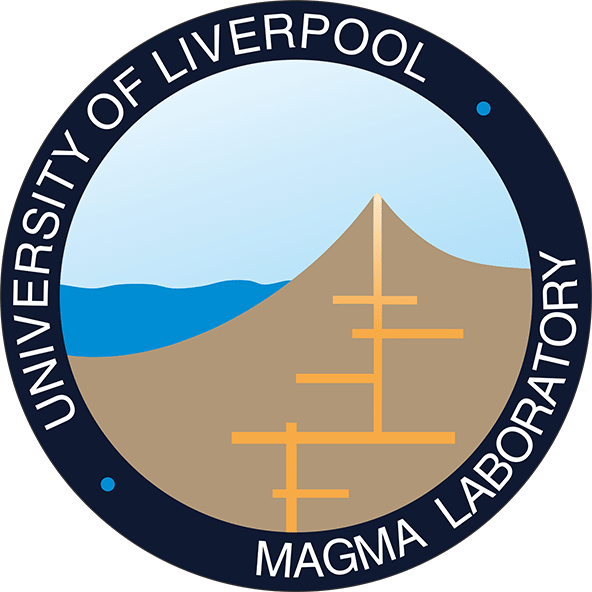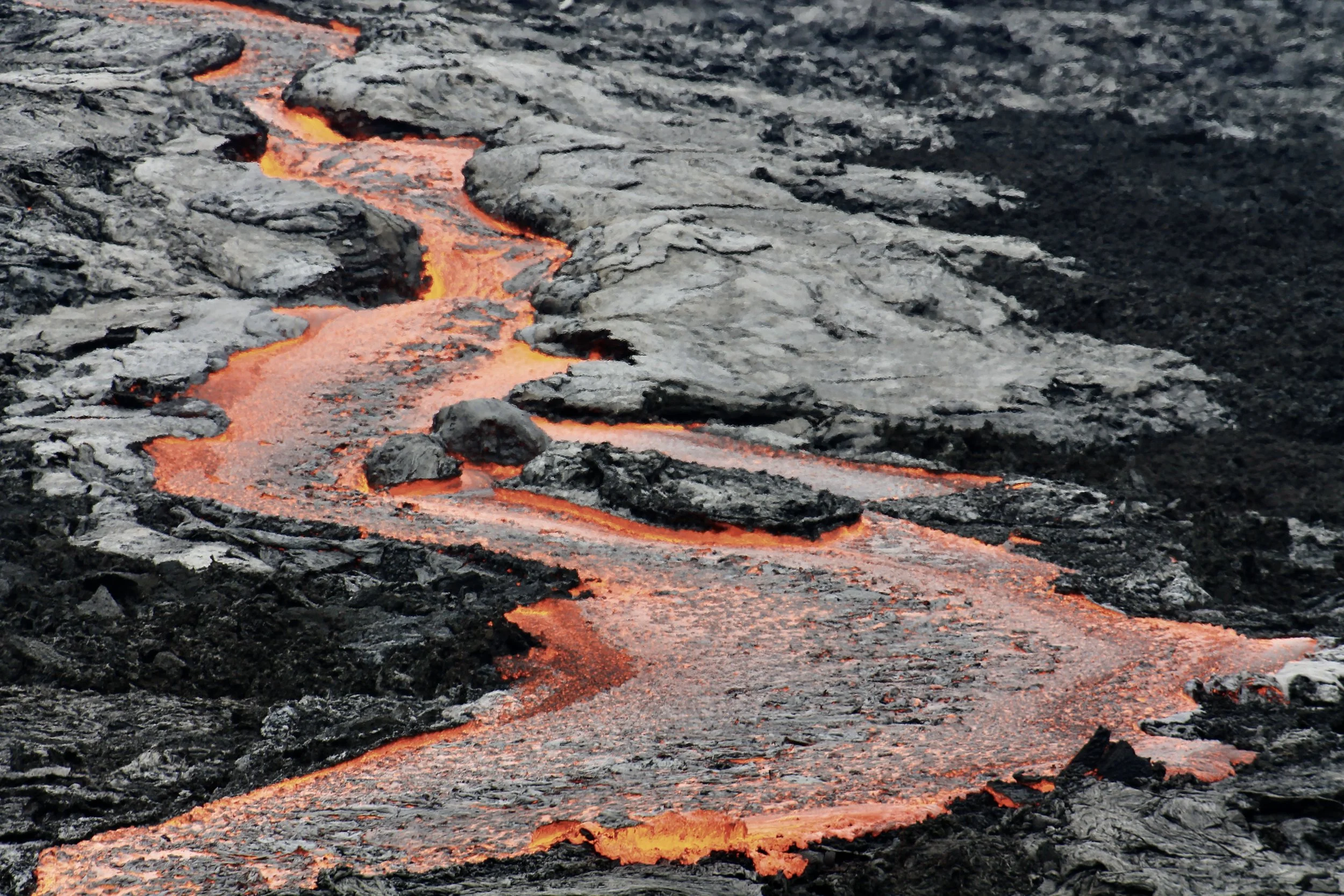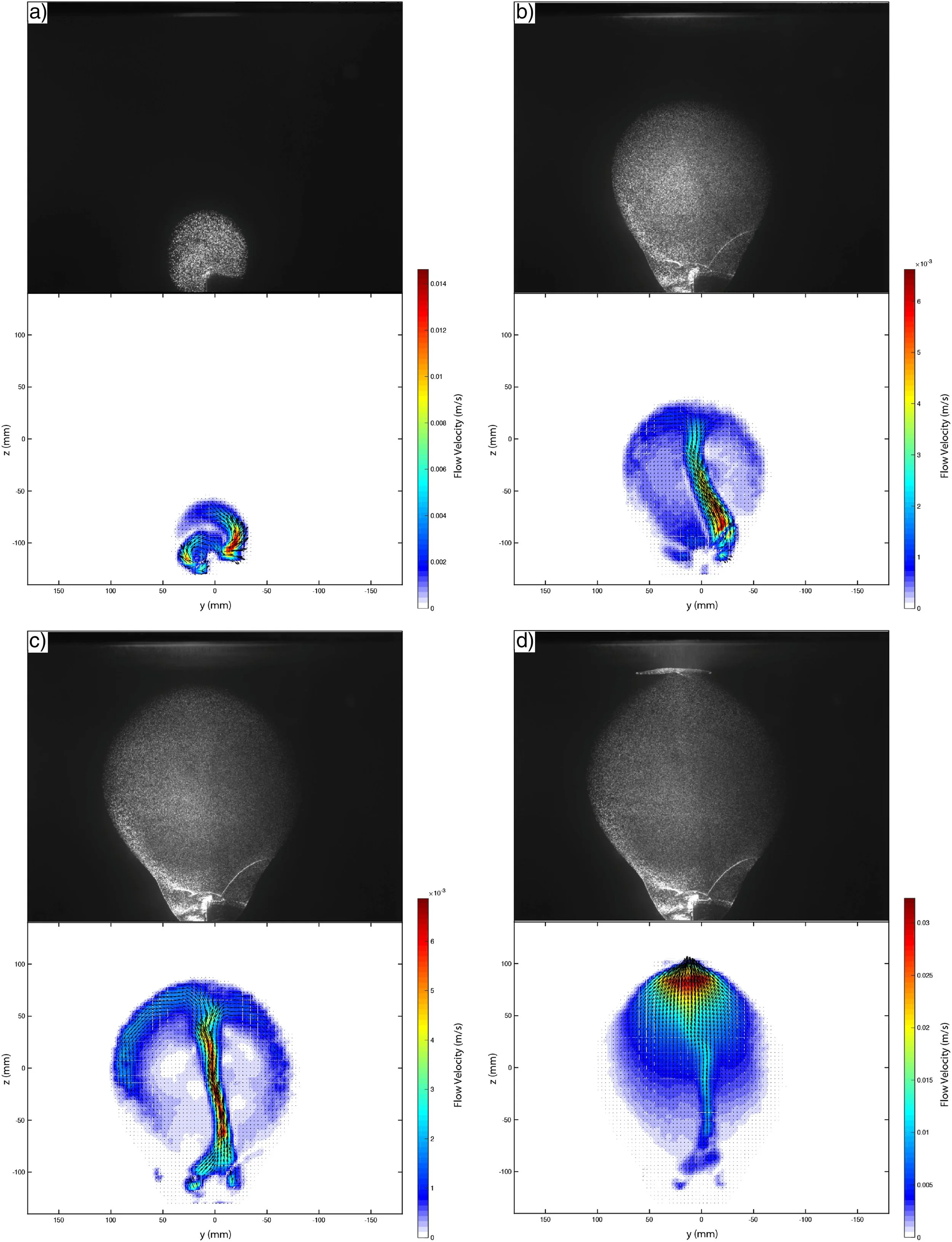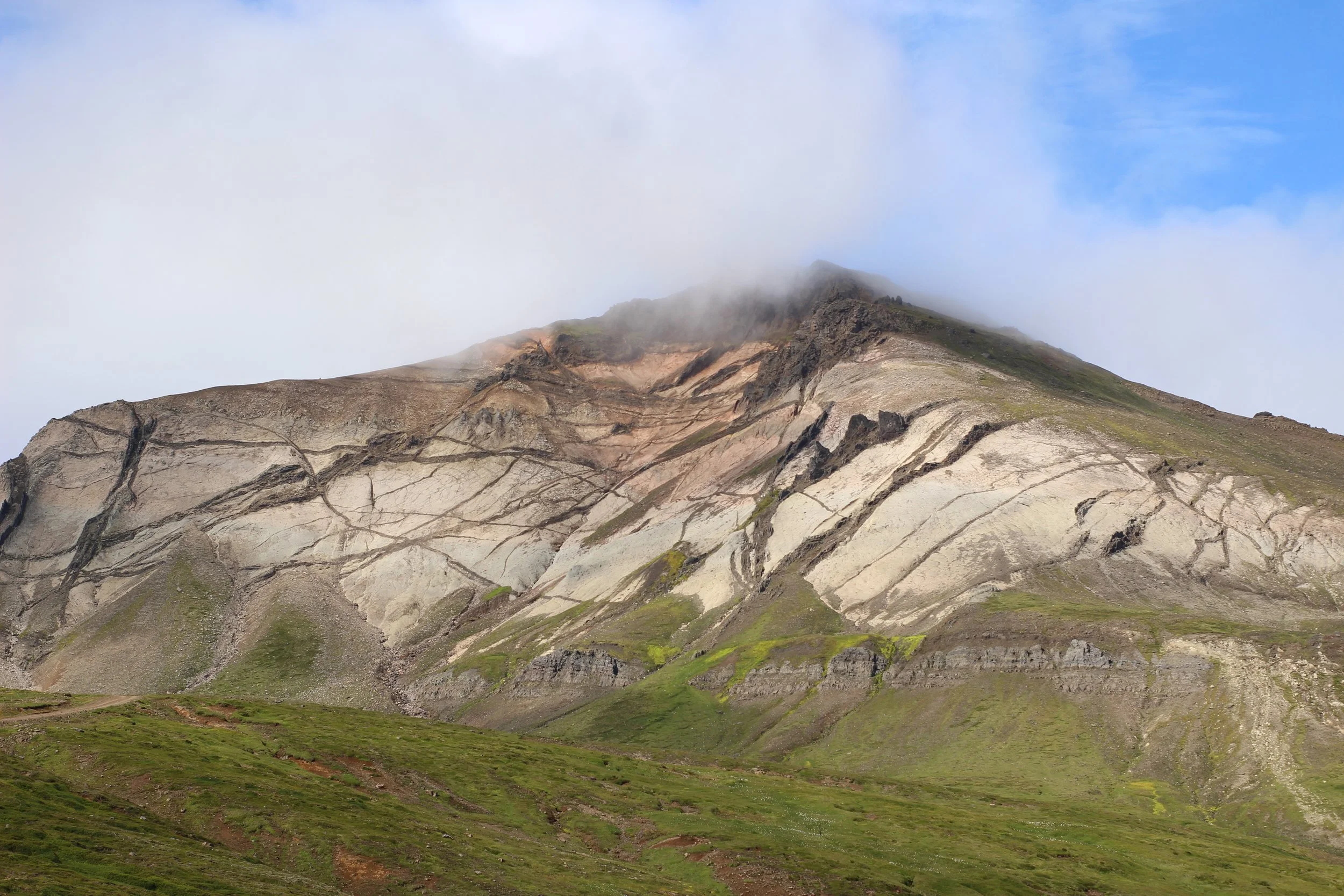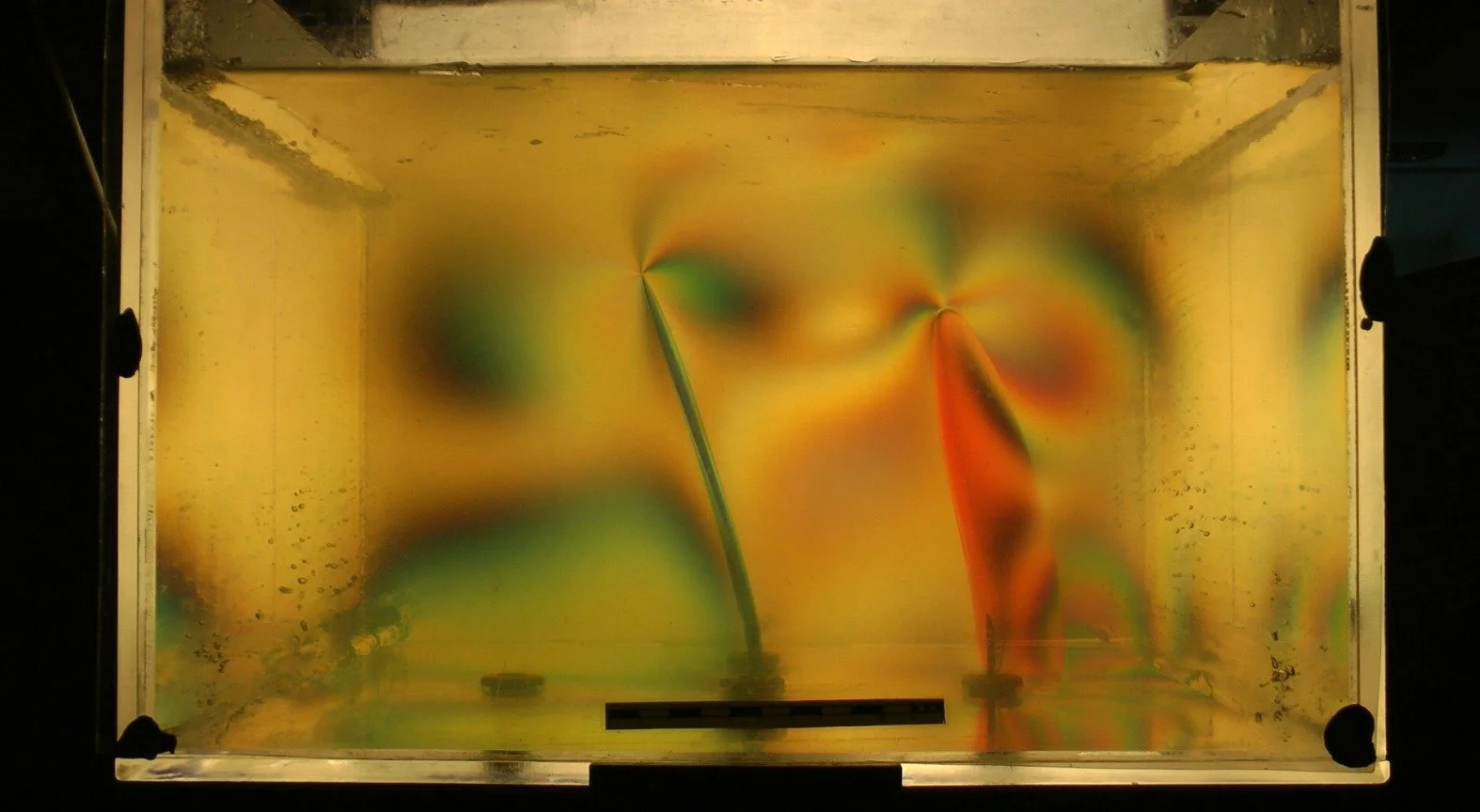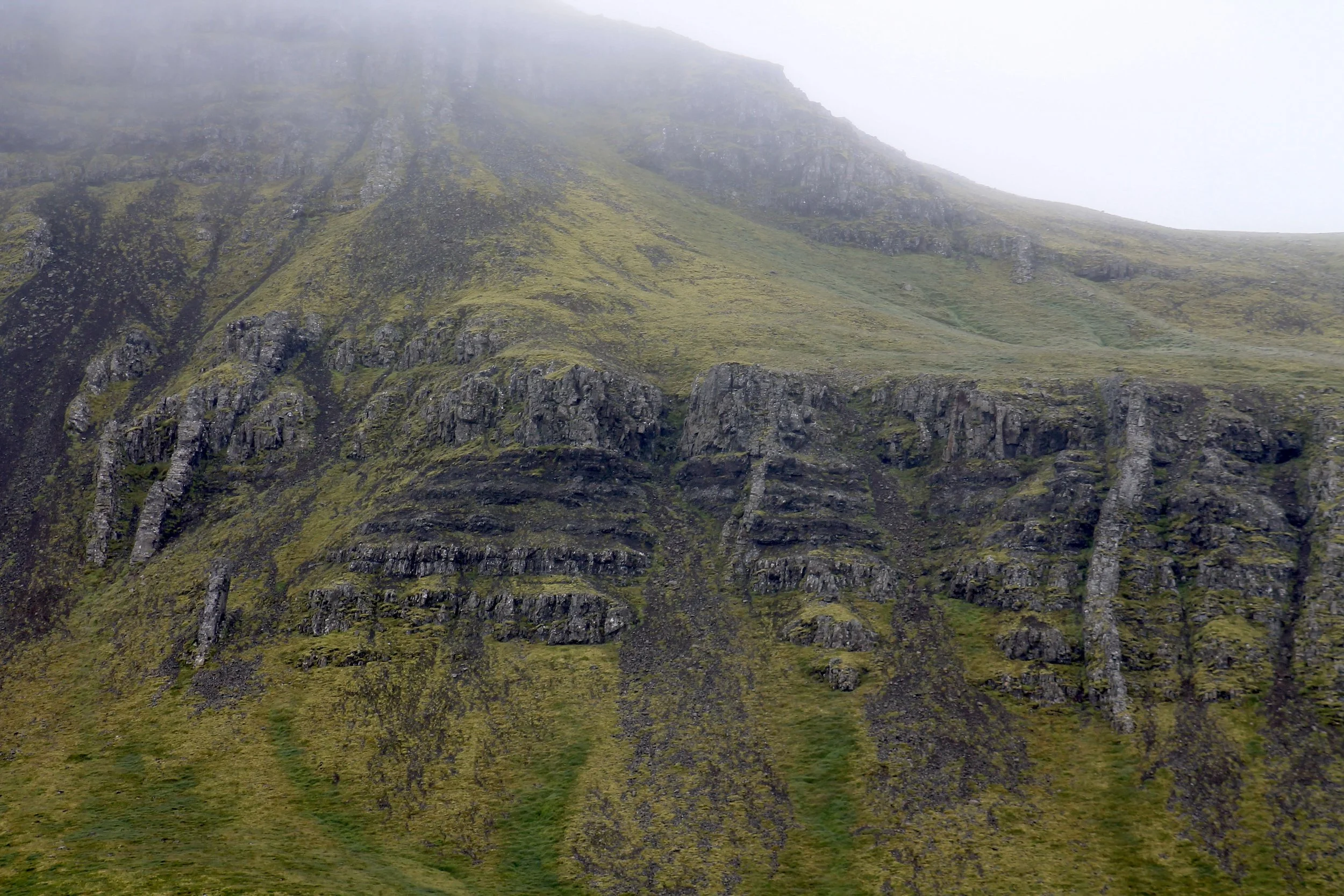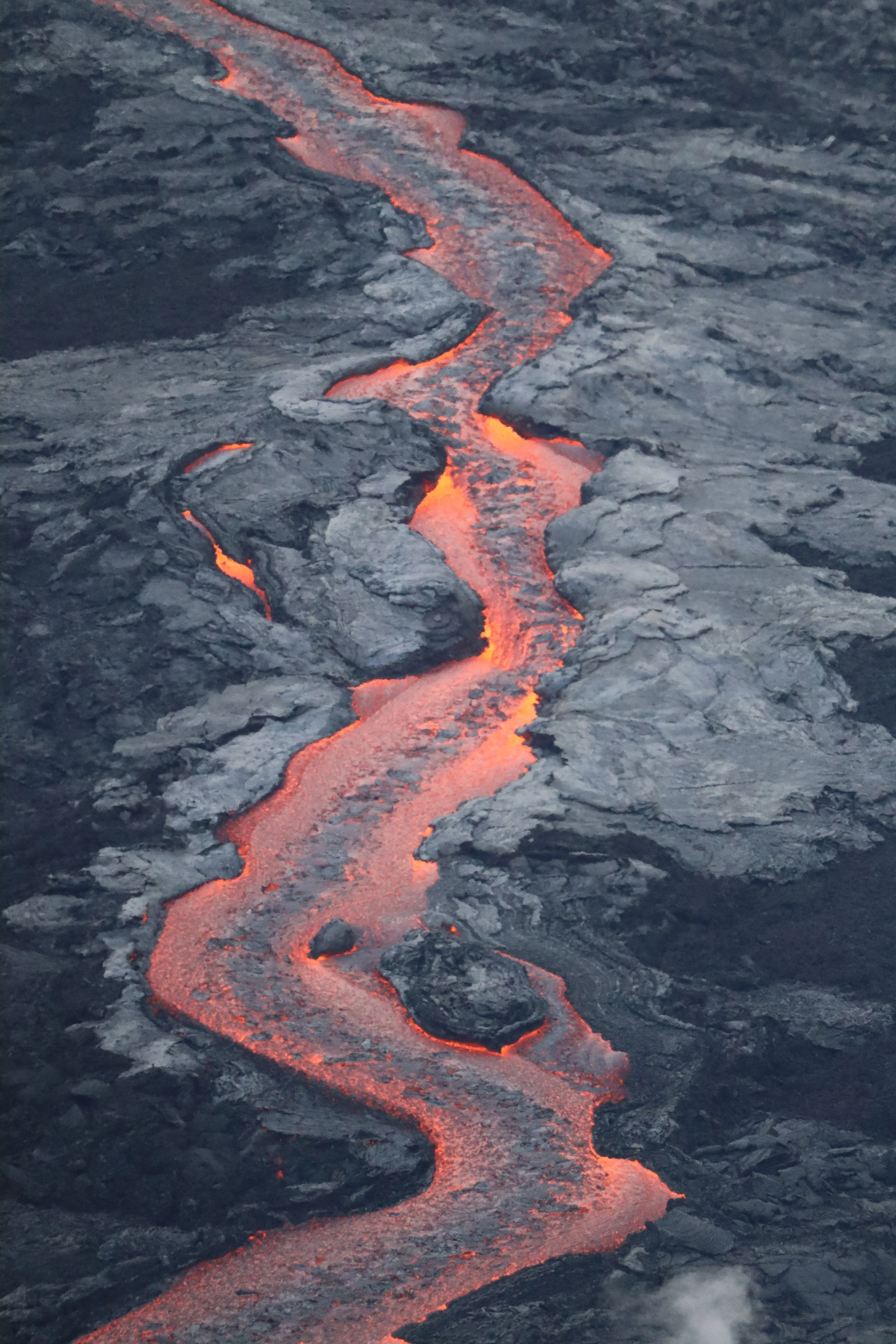
Research
We are proud to make important contributions to research, teaching and impact, and to do what we can to make geosciences more inclusive and with opportunities for everyone to contribute. Our research strategy focuses on using a multidisciplinary approach and bringing together talent from diverse fields such as mathematics, physics, engineering and social science into earth science. Together we tackle the key questions in volcanology, with a particular focus on volcanic plumbing systems.
The MAGMA Lab team and collaborators from Uppsala University look at an outcrop of hyaloclastite in Iceland (Photo: Caitlin Chalk)
Funding
We receive funding from a number of institutions and have ongoing grant applications in review. Our biggest funding currently comes from the UK Research and Innovation (UKRI) Future Leaders Fellowship which has awarded us £1.5 million for our existing project "Modelling Magma Movement: Linking Indirect Observations with Dynamic Processes". Future financial aid comes from Research England's Higher Education Innovation Fund and the Natural Environment Research Council.
Our doctoral students have been funded through a number of channels, notably studentships and research grants from the Natural Environment Research Grant.
Current research projects
Modelling Magma Movement: linking indirect observations with dynamic processes
How can we use analogue experiments to replicate natural basaltic fissure plumbing systems?
How does magma flow in mafic sills?
Can numerical simulations capture dyke propagation in real-time?
Modelling Magma Movement: linking indirect observations with dynamic processes
We are developing the next generation of magma-filled fracture models by applying a multidisciplinary approach and aim to instigate a step change in eruption forecasting and volcanic hazard assessment. Existing models of magma sub-surface flow are incomplete and insufficient to allow for rapid and reliable decision making associated with a volcanic crisis. With over 800 million people living at direct risk from volcanic activity globally, our proposed outcome is to significantly minimise the human and economic cost of eruptions.
Through use of analogue experiments, mathematical modelling, and field studies of exposed fossil volcanic plumbing systems, we are developing the interpretation of geodetic and geophysical observations of magma intrusions.
Lava flow from Fagradalsfjall, Iceland (Photo: Janine Kavanagh)
Fake it till you make it: how can we use analogue experiments to replicate natural basaltic fissure plumbing systems?
The dynamics of the plumbing systems of basaltic fissure systems are only partially understood due to the indirect methods of study that are commonly used. Here, we are investigating dyke (sheet-like) geometries specifically.
To better understand how dykes propagate in different tectonic regimes, we use gelatine analogue experiments to show how they grow under different stress regimes and image the 3D flow dynamics of the fluid within the fractures using a novel technique, 3-Dimensional-3-Component Tomographic Particle Image Velocimetry (3D3C-TomoPIV).
We are using another analogue experiment setup to investigate magma mixing and interaction in high aspect ratio dyke geometries using different combinations of miscible fluid pairs that scale to the natural system. We process captured images to quantify the degree of mixing spatially and temporally and see how this affects fluid flow and patterns, and potential eruptive styles and products.
Additionally, we are conducting field campaigns to exposed dykes in Iceland to see if magma storage, interaction, and flow is recorded in exhumed fissure plumbing systems and what recorded textures tell us. We use a combination of scanning electron microscopy (SEM) and electron backscatter diffraction (EBSD) to describe textures and look for evidence of crystal strain and deformation which could indicate flow. An electron probe microanalyzer (EPMA) is also used to determine the geochemistry of collected samples.
This research is led by PhD student Tegan Havard, with supervision from Dr Janine Kavanagh, Dr Thomas Jones, and Dr Elisabetta Mariani.
An analogue experiment looking at how magma mixes in dykes (Photo: Tegan Havard)
How does magma flow in mafic sills?
Our research is also focused on understanding magma flow within mafic sills, and there are a number of research questions we plan to address within this overarching topic.
The first is investigating how magma rheology influences magma flow within sills. This will be studied using analogue experiments, with different rheology magma analogues injected into a tank of layered gelatine to simulate natural sill-forming conditions. These experiments will be conducted using 2D and 3D particle image velocimetry, which allows the fluid flow variations to be mapped in space and time.
The second research question attempts to understand how variations in magma transport are recorded in ancient, crystallised sills. This will be investigated using field campaigns to a well-studied mafic sill, and by analysing orientated samples using electron back-scattered diffraction to identify textural evidence for flow variations such as changes in preferred crystallographic orientations.
The third research question looks at the impacts of prolonged, channelised magma flow on the contact metamorphism around the sill. This will be investigated first through numerical modelling of a region of prolonged heat flow within a larger body of the intrusion to see how this would impact the temperatures achieved in the country rock. Then, this information will be compared to our understanding of metamorphic minerals that can form, and then compared to a well-studied natural example.
This research is led by PhD student Kate Williams, with supervison from Dr. Janine Kavanagh, Dr. Elisabetta Mariani, Dr. John Wheeler and Dr. David Dennis.
Flow of fluid in an experimental sill (Williams et al., 2022)
Can numerical simulations capture dyke propagation in real-time?
Numerical models of dyke propagation are vital for understanding how magma is transported in dykes, and ultimately predicting whether or not a volcanic eruption will occur. Current models are able to recreate dyke pathways post-propagation, yet a major challenge lies in simulating the magma movement as it is occurring in real time, which could bring major benefits to volcano monitoring. In collaboration with researchers at the Barcelona Supercomputing Centre, we are developing a new numerical model of dyke propagation using the Finite Element Model Alya. The model is being used to simulate analogue dyke experiments performed in the MAGMA lab, from fluid injection to eruption at the surface.
To simplify the complex physics of dyke behaviour, numerical models often either neglect or simplify the fluid dynamics of the problem. However, it is essential to resolve the fluid flow in order to calculate the time-scales of dyke propagation and capture real-time movement. What’s more, experiments performed in the MAGMA lab have shown that fluid flow in dykes is not always as simple as is often assumed.
Fluid flow in a propagating dyke (Kavanagh et al., 2018)
In our experiments, we use an imaging technique called Particle Image Velocimetry (PIV) to obtain the velocity profiles within dykes. Previous experiments have shown that the fluid flow can exhibit complex recirculating patterns (even in 2D), which cannot be described by the simplified fluid dynamics models.
To determine how fluid flow influences dyke propagation, we are developing our numerical model to include the full set of fluid dynamics equations describing flow in fractures.
We hope to use this model, along with experimental data, to answer important questions about magma flow in dykes (such as “Does turbulence play a role in dyke propagation?”, and “How does magma viscosity/rheology affect host-rock deformation?”).
This research is led by Dr Caitlin Chalk, in collaboration with Dr Adrià Quintanas-Corominas at Imperial College London. They are working together with Dr Janine Kavanagh, Prof Antonio Costa (INGV, Bologna), Dr Guillaume Houzeaux (Barcelona Supercomputing Center), and Dr Arnau Folch (Barcelona Supercomputing Center).
What are the 3D effects in magma intrusions?
Dykes are typically thought of as thin, sheet-like intrusions that can be approximated by a two-dimensional geometry. In nature, dykes interact with their surroundings (including other dykes), which can lead to complex magma intrusions such as dyke-sill transitions, cone sheets, segmented dykes, and very bendy magma pathways. In the MAGMA lab, we are now using tomographic PIV to obtain the three-dimensional fluid velocity profiles and solid strain rates in analogue intrusions. The experiments will be compared with numerical simulations to gain insight into the 3D dynamics of magma intrusions in the upper crust.
This research is led by Dr Janine Kavanagh, Dr Caitlin Chalk and Dr David Dennis.
A complex dyke swarm exposure in Hvítserkur, East Iceland (Photo: Caitlin Chalk)
How do coupled fluid-fracture interactions vary through space and time with different fluid flow states?
Observation of the real-time, micro scale, complex coupled fluid-fracture dynamics is not yet possible. Today, spatial resolution of coupled processes of fluid flow dynamics, accompanying crustal deformation and local stress perturbation within the fractured subsurface is constrained to tens of meters to kilometre scale flow and deformation patterns through geophysical and remote sensing techniques.
Traditionally, microscale fluid flow history has been interpreted through petrological analysis of rock samples extracted from boreholes. However, this “post-deposition” approach doesn’t capture the entire evolutionary history, failing to account for possible unconformities created by processes like dissolution. No direct, real-time observations of physical fluid-fracture interface dynamics inhibit industries like the geothermal to employ non-invasive reservoir management techniques to prevent mineral clogging and therefore, efficiency and productivity decline of geothermal resources.
To help unravel, real-time, dynamic, micro scale complexity at the fluid-fracture interface and the surrounding media, advances in crustal analogue experiments and laser imaging techniques will be utilised. More specifically, by tracking particles seeded within the fluid and “crust” and utilising photo elastic properties of the crustal analogue material, recording of fluid flow trajectories, the stress/strain evolution and changing geometry in structures of the deforming “crust” will help to answer how physical perturbations in fluid conditions/properties at the micro scale vary flow regimes, and as a consequence, the direction of the structural evolution and spatio-temporal variation of temperature and pressure conditions within the fluid filled crack.
Quantification of these dynamic interplays will help inform under what flow states the conditions at the fracture-fluid interface may inhibit mineral nucleation and growth mechanisms, with the intention of applying this research to the problem of mineral clogging within geothermal resources.
This research is led by Dawid Rybak with collaboration and supervision provided by Dr Janine Kavanagh, Dr David McNamara and Dr Geoff Kilgour.
Photo elastic stress fringe interactions induced by two simultaneously propagated hydraulic fractures (Photo: Elliot Wood)
From the micro to the macro scale in field experiments: Linking observations across scales in fossil dykes
Since dykes feed and trigger eruptions when intersecting the surface, understanding the factors that control their propagation and emplacement is essential for eruption forecasting. However, the fact that dyke propagation comprises a suite of interlinked syn- and post-emplacement processes (e.g. crystallization due to cooling, chemical interactions with host rock, volatile exsolution) makes it difficult to systematically distinguish propagation patterns and link them to dynamic emplacement processes.
The project aims at identifying magma flow patterns in exposed fossil dykes by following a multidisciplinary approach, aimed at increasing the complementarity of different methods and techniques including rock magnetic/petrographic laboratory analyses and detailed field observations of exposed fossil dykes.
To this purpose, fossil dykes in Eastern Iceland will be studied by:
Collecting detailed geometric data using photographs from drones and by measuring preserved macroscopic textures (e.g. flow banding, ropey structures, stretched vesicles, slickenlines at the dyke margin-host rock contact) to infer magma flow direction;
Looking at microscopic magma flow indicators such as magnetic fabrics and crystal alignment through magnetic and petrographic techniques, such as anisotropy of magnetic susceptibility (AMS), anisotropy of anhysteretic remanent magnetisation (AARM) and electron backscatter diffraction (EBSD).
This research is led by Dr. Stefano Urbani and Dr. Janine Kavanagh and our collaborators and project partners: Prof. Andy Biggin, Dr. Elisabetta Mariani and Prof. Steffi Burchardt (University of Uppsala).
Basaltic dykes from the Reydarfjördur dyke swarm in Iceland, cross-cutting lava flows (Photo: Janine Kavanagh)
